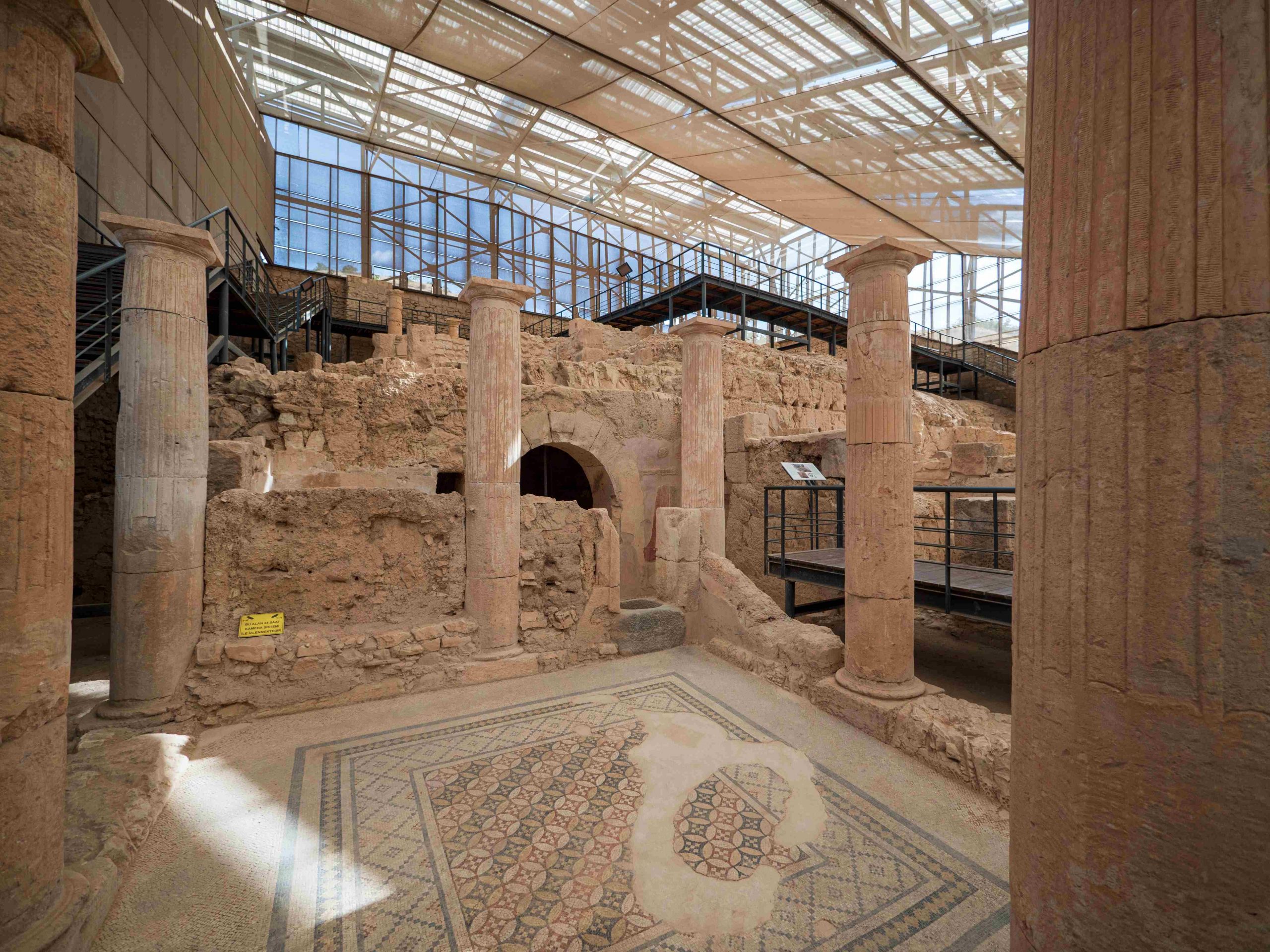Greek inscriptions were revealed on a large floor mosaic during excavations in the Incesu district of modern-day Kayseri, in central Asia Minor, in what was ancient and medieval Caesarea. Roughly 600 square meters of the impressive and intricately designed mosaics form the largest such artifact in Cappadocia and are part of what’s considered a 4th-century AD Roman villa.
Şükrü Dursun, Kayseri’s provincial director of culture and tourism, said the excavation is in its third year, with the initial assessments calculating that the mosaic extends from 300 to 600 square meters. Dursun dated the find to the 4th century, with traces from the 3rd century.
The villa
Art history Professor Can Erpek, who heads up the dig, said the building where the floor is located survived into the Byzantine era and even after the Seljuk conquest of the area in the 11th century. Spanning a considerable expanse with approximately 33 rooms, the villa’s luxurious mosaics indicate its status as an aristocrat’s residence.
“In the central Anatolia region, which includes Cappadocia, we haven’t seen such a large dwelling with floor mosaics… we have not yet fully reached the boundaries of this residence,” he said.
Inscriptions and mosaics
Another highlight is a Latin inscription found in a section presumed to have served as a reception hall, along with Greek engravings and various geometric mosaics.
Erpek highlighted the revelation of the Greek name “Hyacinthos” in the inscriptions, which according to Turkish archaeologists, belongs to an administrator and a one-time resident of the dwelling.
Kayseri, an open-air museum
Caesarea was the capital of Cappadocia and one of the most important cities in Roman Asia Minor and the subsequent Eastern Roman Empire (Byzantium), lying on trade routes in central Asia Minor connecting Black Sea ports with upper Syria and Mesopotamia.
This province played a significant role in the flourishing cultural milieu of Anatolia during the 4th century and served as an epicenter of early Christianity, hosting a cavernous monastic complex commissioned by St. Basil the Great, one of Eastern Orthodoxy’s early “Great Hierarchs”.



